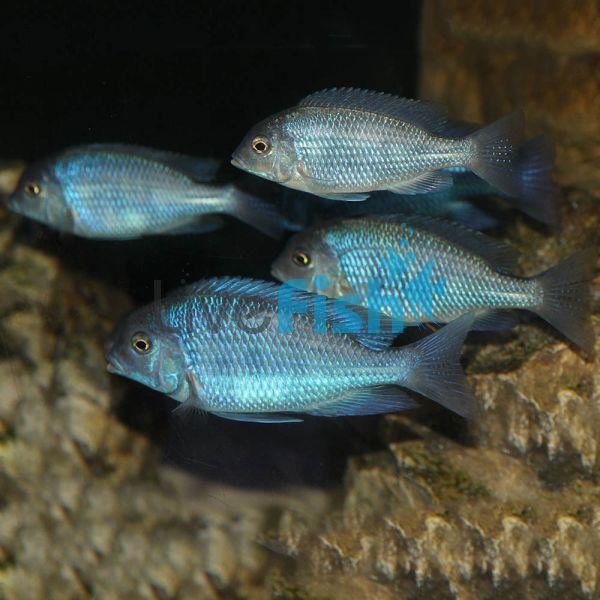Blue Dolphin 5cm
Where most Lake Malawi Cichlid tanks consist of various coloured peacock cichlids, the Blue Dolphin Cichlid can make for a great and interesting addition. Its larger body size, vibrant blue colour, and its unique facial structure make it a popular addition to mixed African cichlid aquariums. It gets the name blue dolphin because of its variations of blue through the body which range from light metallic blues to deep dark blues through the fins, along with this as these fish age they develop a prolific nuchal hump.
- Buy 4 for $15.39 each and save 20%
- Buy 6 for $13.46 each and save 30%
Blue Dolphin Cichlid
Where most Lake Malawi Cichlid tanks consist of various coloured peacock cichlids, the Blue Dolphin Cichlid can make for a great and interesting addition. Its larger body size, vibrant blue colour, and its unique facial structure make it a popular addition to mixed African cichlid aquariums. It gets the name blue dolphin because of its variations of blue through the body which range from light metallic blues to deep dark blues through the fins, along with this as these fish age they develop a prolific nuchal hump.
Though blue beluga cichlid may have been a more fitting name due to the nuchal hump they develop these fish are still amazingly mesmerizing in both a mixed African cichlid or species-specific aquarium. Another great benefit to the Blue Dolphin Cichlid is that they are not nearly as aggressive when compared to other African cichlids however they can hold their own if picked at as their larger size of 25cm plays to their advantage.
Trying to find the males and females in Blue Dolphin Cichlid s is possible as the males tend to grow larger and be more vibrant than the females. The wild habitat of the blue peacock cichlid is lake Malawi of Africa however they are very commonly bred in captivity meaning that it is extremely rare to find wild-caught individuals.
Tank Recommendations for your Blue Dolphin Cichlid
The Blue Dolphin Cichlid is a very active fish that needs a tank that is at least 125 gallons (470 liters) and around 4 feet minimum width. Their large maximum size of 25cm and active nature means they need both length and a decent width to ensure their activity levels. Sand or crushed coral substrate is fine for the blue dolphin cichlid but for the aquascape overall it would be best to replicate a rocky African lake biotope with rocks that increase the PH like Texas rock or Seriyu stone.
Suitable Tank Buddies
TheBlue Dolphin Cichlid is fairly peaceful and can be kept with other colour variations of the peacock species and similar African cichlids. Consideration can be made to keep them with peaceful Mbunas, Haps and African cichlids from other lakes as well as long as there is adequate space and proper environmental needs.
Usually Compatible
Other African cichlids like peacocks, electric yellows, red zebra cichlids, and similar species.
Sometimes Compatible
Larger haps such as venustus, Fuscodichromis, and small Africans such as julidochromis.
Rarely Compatible
Shrimp and nano aquarium fish like neon tetras, ember tetras, and also very aggressive South American cichlids such as Oscars and Jaguar Cichlids.
Feeding your Blue Dolphin Cichlid
Blue Dolphin Cichlids like other African cichlids are very easy to feed. They are an opportunistic feeder meaning they will readily eat a wide range of foods being both dry, fresh, and frozen. Their diet should contain good quality African cichlid pellets with high contents of spirulina or greens. Feeding should occur once a day and it is best to do so during the day.
| Scientific Name | Cyrtocara Moorii |
|---|---|
| Care Level | Moderate |
| Common Names | Blue Dolphin Cichlid, Blue Moorii Cichlid |
| Diet | Omnivore |
| Fish Family | Cichlidae |
| Lifespan (years) | 15 |
| Max. Length (cm) | 25 |
| Min. Tank Volume (l) | 470 Litres |
| Origin | Africa |
| Reef Safe | No |
| Sociability | Peaceful |
| Venomous | No |
| Water Conditions | 24-26° C (75.2-79° F), pH 8.0-8.5 |




